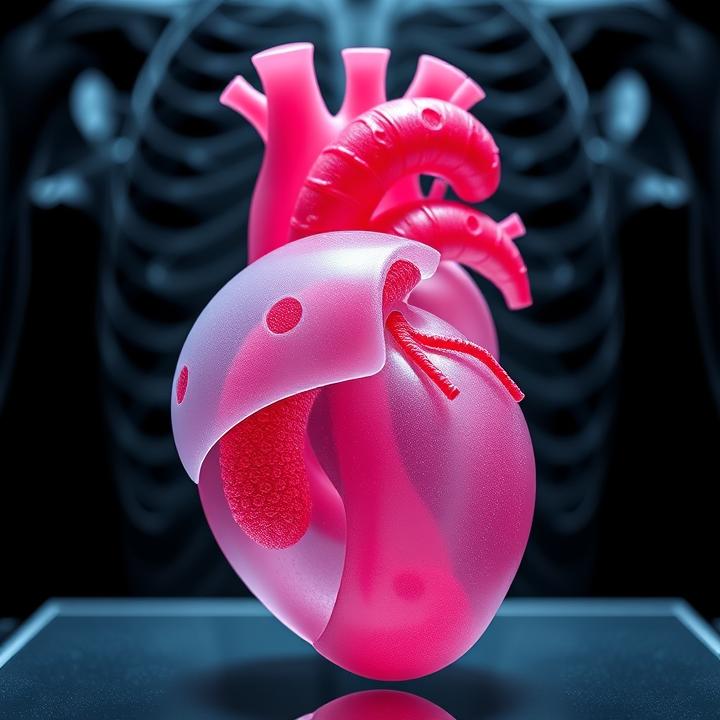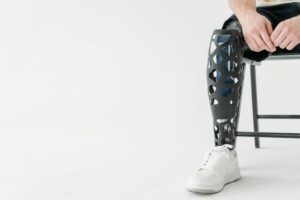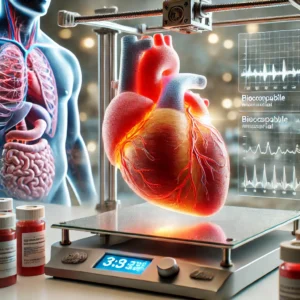The Future of 3D Printing in Healthcare: Applications, Case Studies, and Industry Trends

Explore how 3D printing is transforming healthcare with applications like custom prosthetics, medical implants, and surgical models. Discover industry case studies, benefits, and the future of additive manufacturing in healthcare.
The Role of 3D Printing in Healthcare
The healthcare industry is experiencing a transformative shift, thanks to the emergence of 3D printing. From custom prosthetics to patient-specific surgical models, additive manufacturing has introduced unprecedented possibilities in medical treatments and procedures. Unlike traditional manufacturing methods, 3D printing builds objects layer by layer from digital files, offering the ability to produce highly complex, customized medical devices and solutions.
This article explores the significant applications of 3D printing in healthcare, highlighting real-world case studies, key benefits, and the challenges faced by the industry. By examining the current landscape and future trends, we’ll uncover how 3D printing is shaping the future of medicine and improving patient outcomes.
Case Study 1: Custom Prosthetics by Organovo
Organovo, a leader in the field of bioprinting, is revolutionizing the production of custom prosthetics using 3D printing technology. Traditional prosthetics are often generic and mass-produced, which can result in discomfort for patients. Organovo, however, uses 3D printing to create prosthetic limbs that are highly tailored to the individual’s anatomy.
How Organovo Is Shaping Prosthetics
By leveraging the precision of 3D printing, Organovo creates prosthetics that fit the patient’s unique limb shape, allowing for greater comfort and functionality. The company employs advanced scanning technology to map out the limb and create an exact replica. With the ability to print complex, lightweight structures, they can create prosthetics that not only fit perfectly but also offer improved durability and aesthetics.
Results and Benefits
The use of 3D printing allows for faster production of custom prosthetics, which can significantly reduce waiting times for patients. Additionally, the customization process ensures that each prosthetic limb offers the best possible fit, enhancing the patient’s mobility and quality of life. Organovo’s use of 3D printing showcases the immense potential for additive manufacturing in transforming healthcare through personalized solutions.
Case Study 2: 3D-Printed Implants by Materialise and St. Jude Medical
Materialise, a leading 3D printing service provider, has collaborated with St. Jude Medical to create custom medical implants that improve patient outcomes. One such case involved a complex skull implant used to treat a patient with a severe cranial deformity.
The Custom Implant Process
Materialise uses 3D scanning and imaging technologies to create detailed, patient-specific models of the affected area. Once the model is created, a 3D-printed implant is produced using biocompatible materials tailored to the patient’s unique needs. In the case of the cranial implant, the procedure involved creating an implant that matched the exact curvature of the patient’s skull, which would have been extremely difficult to achieve with traditional methods.
Results and Benefits
The use of 3D-printed implants allowed the medical team to perform the surgery with greater precision, ensuring a better fit and faster recovery. The custom implant also significantly reduced the risk of complications compared to standard implants. Materialise and St. Jude’s partnership highlights the growing role of 3D printing in creating personalized medical solutions that improve surgical outcomes and patient safety.
Case Study 3: Surgical Planning with 3D-Printed Models at the Mayo Clinic
The Mayo Clinic is at the forefront of using 3D printing for pre-surgical planning, helping surgeons prepare for complex procedures. Before performing surgery on a patient, doctors often rely on 3D-printed models of the affected body part to visualize the surgical area in detail.
How Mayo Clinic Uses 3D Printing
At Mayo Clinic, surgeons use 3D-printed models created from patient-specific medical imaging scans (such as CT or MRI). These models provide a physical representation of the patient’s anatomy, allowing doctors to plan the surgery, practice techniques, and visualize difficult-to-see areas more clearly. This pre-surgical preparation minimizes risks and improves surgical precision.
Results and Benefits
By using 3D-printed models, Mayo Clinic has seen enhanced surgical outcomes, reduced operation times, and improved patient satisfaction. Surgeons can better plan complex surgeries, such as organ transplants or joint replacements, resulting in fewer complications and faster recovery times. This case study demonstrates the effectiveness of 3D printing in enhancing the surgical process and optimizing patient care.
Benefits of 3D Printing in Healthcare
1. Personalized Medicine and Customization
One of the key benefits of 3D printing in healthcare is its ability to create patient-specific solutions. Whether it’s custom prosthetics, implants, or surgical models, the technology allows for personalized designs that better suit individual patient needs, leading to improved outcomes and comfort.
2. Faster Production of Medical Devices
Traditional methods of producing medical devices, such as prosthetics and implants, often involve lengthy lead times and mass production methods. 3D printing, on the other hand, allows for faster production, reducing waiting times for patients. This speed is particularly valuable in urgent medical situations where time is critical.
3. Improved Surgical Planning
3D printing allows surgeons to practice complex surgeries using patient-specific models. This pre-surgical planning can significantly improve surgical precision, reduce risks, and lower the chances of complications during the procedure. It also allows for more informed decision-making, especially in challenging medical cases.
4. Cost-Effective Solutions for Healthcare Providers
With the ability to produce customized, on-demand medical devices, 3D printing helps reduce costs for healthcare providers. It eliminates the need for large inventories of generic parts and components and minimizes waste. This efficiency can lead to lower overall costs for both patients and medical institutions.
5. Innovative Bioprinting Possibilities
The future of 3D printing in healthcare is expanding beyond prosthetics and implants. Bioprinting, which involves printing with living cells, is paving the way for creating tissues and organs. Although still in early stages, bioprinting holds the potential to revolutionize organ transplantation and provide personalized treatments for various diseases.
Future of 3D Printing in Healthcare
1. Bioprinting and Organ Transplantation
The ultimate goal for bioprinting is to print fully functional organs, which could alleviate the organ shortage crisis. Researchers are working to print tissues such as skin, cartilage, and even blood vessels, with the long-term aim of creating organs like livers and kidneys. If successful, bioprinting could revolutionize transplant medicine, providing personalized, life-saving solutions for patients in need of organ transplants.
2. Integration with AI and Machine Learning
As 3D printing technology advances, it is expected to be integrated with artificial intelligence (AI) and machine learning algorithms to further personalize and optimize medical treatments. AI can help design and simulate 3D models, predict the outcomes of surgeries, and assist in creating patient-specific prosthetics and implants.
3. Regulatory and Ethical Challenges
While the potential of 3D printing in healthcare is immense, there are regulatory and ethical challenges that need to be addressed. Medical devices, including 3D-printed implants and prosthetics, must undergo rigorous testing and certification to ensure patient safety. Additionally, ethical concerns surrounding bioprinting and the creation of human tissues must be carefully navigated as the technology evolves.
Frequently Asked Questions (FAQs)
Q1: What are the main applications of 3D printing in healthcare?
A: 3D printing in healthcare is used for creating custom prosthetics, medical implants, surgical models, and even bioprinting tissues and organs. It allows for personalized and precise medical solutions.
Q2: How does 3D printing improve patient outcomes in surgery?
A: 3D printing allows surgeons to use patient-specific models to practice and plan surgeries, which enhances precision, reduces complications, and shortens recovery times.
Q3: What are the advantages of 3D-printed prosthetics?
A: 3D-printed prosthetics are customized to fit an individual’s anatomy, offering better comfort, functionality, and aesthetics compared to traditional prosthetics. They can be produced faster and at a lower cost.
Q4: How does 3D printing reduce healthcare costs?
A: 3D printing reduces costs by enabling on-demand production of custom devices, minimizing material waste, and eliminating the need for large inventories of standard parts.
Q5: Can 3D printing create organs for transplants?
A: While bioprinting is still in early stages, it holds the potential to create tissues and organs in the future, which could address organ shortages and improve transplant outcomes.
Q6: How does 3D printing enhance surgical planning?
A: By creating patient-specific 3D models from medical scans, surgeons can plan complex procedures with greater precision, improving outcomes and reducing risks during surgery.
Q7: Is 3D printing safe for medical devices?
A: Yes, 3D printing is safe for medical devices, as long as the printed components undergo rigorous testing and meet the required standards for durability, biocompatibility, and performance.
Q8: What is bioprinting?
A: Bioprinting is a type of 3D printing that uses living cells to create tissues and organs. It has the potential to revolutionize healthcare by enabling personalized treatments and organ transplants.
Q9: Can 3D printing be used for drug delivery systems?
A: Yes, 3D printing can be used to create customized drug delivery systems that release medication at specific rates or locations in the body, improving treatment efficacy.
Q10: What challenges does 3D printing face in healthcare?
A: Some challenges include regulatory approval, ethical concerns around bioprinting, and the need for specialized materials and technologies to ensure the safety and effectiveness of 3D-printed medical devices.
A New Era of Healthcare Innovation
3D printing has the potential to revolutionize healthcare by offering personalized solutions, improving surgical outcomes, and reducing costs. From custom prosthetics to bioprinting and surgical planning, the applications are vast and continue to grow. As the technology matures and regulatory hurdles are overcome, 3D printing will play an increasingly important role in reshaping the future of healthcare, delivering more precise, efficient, and effective medical treatments for patients worldwide.





